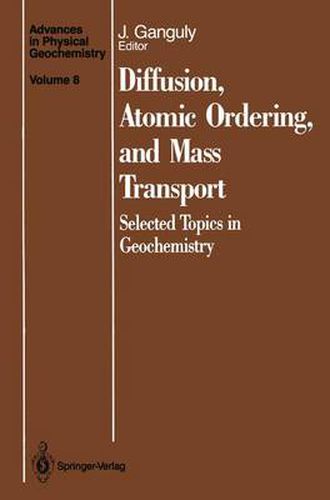Readings Newsletter
Become a Readings Member to make your shopping experience even easier.
Sign in or sign up for free!
You’re not far away from qualifying for FREE standard shipping within Australia
You’ve qualified for FREE standard shipping within Australia
The cart is loading…






This title is printed to order. This book may have been self-published. If so, we cannot guarantee the quality of the content. In the main most books will have gone through the editing process however some may not. We therefore suggest that you be aware of this before ordering this book. If in doubt check either the author or publisher’s details as we are unable to accept any returns unless they are faulty. Please contact us if you have any questions.
One of the fundamental objectives of physical geochemistry is to understand the evolution of geochemical systems from microscopic to regional and global scales. At present there seems to be a general recognition of the fact that internal properties of minerals record important aspects of the evolutionary history of their host rocks which may be unraveled by very fine scale observations. A major focus in the development of geochemical research in the last thirty years has been the application of classical thermodynamics to reconstruct the conditions at which the states of quenched mineralogical properties of rocks have equilibrated during the course of their evolution. While these works have funda mentally influenced our understanding ofthe physico-chemical history ofrocks, in recent years petrologists, mineralogists, and geochemists have been making greater efforts towards the application of kinetic theories in order to develop a better appreciation of the temporal details of geochemical processes. The present volume brings together a variety of current research on transport in systems of geochemical interest from atomic to outcrop scales. A major theme is atomic migration or diffusion, and its various manifestations on microscopic and macroscopic scales. Transport in the solid state is controlled by diffusion and is responsible for the states of atomic ordering and relaxation of composi tional zoning in minerals, development of compositional zoning during cooling, exsolution lamellae, and creep.
$9.00 standard shipping within Australia
FREE standard shipping within Australia for orders over $100.00
Express & International shipping calculated at checkout
This title is printed to order. This book may have been self-published. If so, we cannot guarantee the quality of the content. In the main most books will have gone through the editing process however some may not. We therefore suggest that you be aware of this before ordering this book. If in doubt check either the author or publisher’s details as we are unable to accept any returns unless they are faulty. Please contact us if you have any questions.
One of the fundamental objectives of physical geochemistry is to understand the evolution of geochemical systems from microscopic to regional and global scales. At present there seems to be a general recognition of the fact that internal properties of minerals record important aspects of the evolutionary history of their host rocks which may be unraveled by very fine scale observations. A major focus in the development of geochemical research in the last thirty years has been the application of classical thermodynamics to reconstruct the conditions at which the states of quenched mineralogical properties of rocks have equilibrated during the course of their evolution. While these works have funda mentally influenced our understanding ofthe physico-chemical history ofrocks, in recent years petrologists, mineralogists, and geochemists have been making greater efforts towards the application of kinetic theories in order to develop a better appreciation of the temporal details of geochemical processes. The present volume brings together a variety of current research on transport in systems of geochemical interest from atomic to outcrop scales. A major theme is atomic migration or diffusion, and its various manifestations on microscopic and macroscopic scales. Transport in the solid state is controlled by diffusion and is responsible for the states of atomic ordering and relaxation of composi tional zoning in minerals, development of compositional zoning during cooling, exsolution lamellae, and creep.